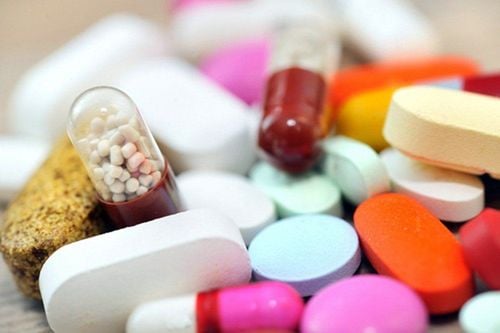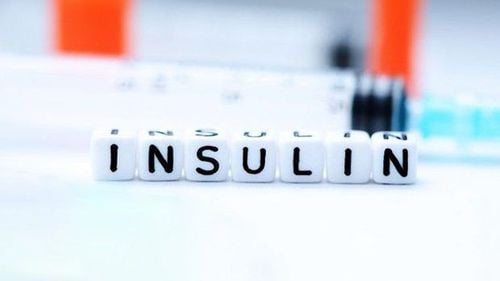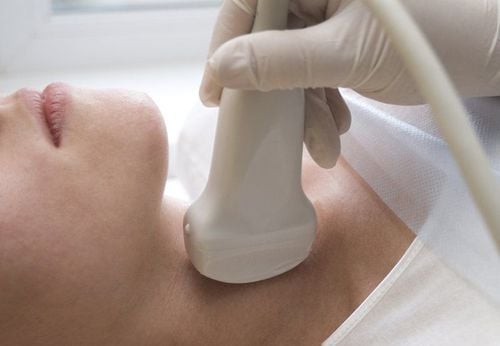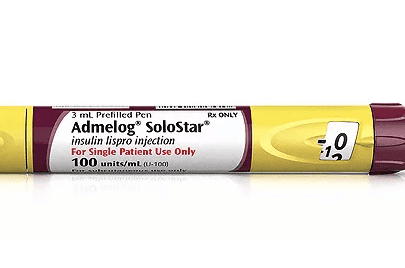This is an automatically translated article.
The article was professionally consulted with General Internal Medicine - Department of Examination & Internal Medicine - Vinmec Nha Trang International General Hospital.Many forms of diabetes insulin are divided according to their onset of action and duration of action: immediate-acting, short-acting, intermediate-acting, long-acting, and mixed. fit. Follow your doctor's instructions when using insulin. The time interval between the injection and the meal can vary depending on the type of insulin being used. Usually, the use of the drug will be combined with a meal.
1. Insulin treats diabetes
Diabetes is a chronic disorder of blood sugar; Associated with abnormalities in carbohydrate, lipid, and protein metabolism. The disease is always associated with the tendency to develop kidney, fundus, neurological and other cardiovascular diseases.The biggest feature in the pathophysiology of type 2 diabetes is the interaction between genetic and environmental factors such as lifestyle changes, food quality, and stress. Life expectancy is increasing, the risk of disease is higher is the factor that cannot be interfered with.
>> See more: Features of drugs to treat type 2 diabetes
Trắc nghiệm dành riêng cho người mắc đái tháo đường: Chế độ ăn của bạn đã hợp lý chưa?
Người bị bệnh đái tháo đường cần phải quan tâm nhiều hơn đến cách tính toán khẩu phần ăn sao cho phù hợp với nhu cầu và tình trạng sức khỏe. Nếu chưa rõ, bạn có thể tìm hiểu kỹ hơn thông qua bài trắc nghiệm ngắn sau đây.2. Indications for use of insulin
Insulin can be started at the first visit if the HbA1c level is above 9% and the fasting blood glucose level is above 15mmol/l.The person has diabetes but has another acute illness; eg severe infection, myocardial infarction, stroke...
People with diabetes and kidney failure have contraindications to taking blood glucose-lowering pills; patients with liver damage...
People with gestational diabetes or gestational diabetes .
People who treat blood glucose-lowering drugs with pills are not effective; people who are allergic to blood glucose-lowering pills...
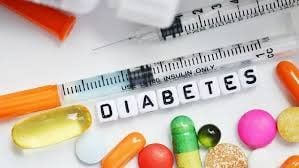
Có thể dùng insulin ngay từ lần khám đầu tiên nếu mức HbA1C trên 9% mà mức glucose máu lúc đói trên 15mmol/l
3. Start taking insulin
Usually the dose of sulfonylurea is reduced by 50% and taken only in the morning, the insulin dose is usually started at 0.1 UI/kg of the NPH type, given at bedtime. Two injections daily with an insulin mix (insulin mixt), depending on plasma glucose and/or HbA1c levels.4. Adjust insulin dose
When the sulfonylurea dose is increased to the maximum or insulin therapy reaches 0.3 UI/kg, the blood sugar level is still not lowered.Adjust insulin dose every 3-4 days or twice a week
5. Types of insulin to treat diabetes
Many forms of diabetes insulin are divided according to their onset of action and duration of action: immediate-acting, short-acting, intermediate-acting, long-acting, and mixed. fit.Immediate-acting insulin : Will ensure insulin needed for meals right at the time of injection. This form of insulin is often taken with a longer-acting insulin. Short-acting insulin ensures the amount of insulin needed for a meal in 30-60 minutes. Insulin analogs (Aspart, Lispro and Glulisine): take effect after 10-20 minutes and last about 4 hours. Insulin analogous to human insulin, rapid acting, produced by recombinant DNA technology. Short-acting insulin: Short-acting insulin ensures the required amount of insulin for a meal in about 30-60 minutes. Regular insulin: Regular insulin, which can be used as an intravenous infusion in emergency situations. Moderate-acting insulin: ensures the amount of insulin needed for half a day or overnight. This form of insulin is often combined with an immediate-acting or a short-acting type. NPH insulin: Isophane insulin suspension. For subcutaneous injection only. This group is also known as insulin NPH (Insulatard FlexPen, Insulatard HM). After 1-2 hours of injection, the drug will start to work and the blood sugar-lowering effect can be maintained for 10-16 hours. Long-acting insulin: ensures the amount of insulin needed for the whole day. This form is often combined, as needed, with an immediate- or short-acting type. Insulin glargine: An analogue of human insulin produced by recombinant DNA technology, has a slow release and is stable over 24 hours. Use subcutaneous injection. Insulin analog detemir and Insulin degludec. This group has the advantage that the effect can be maintained for 20-22 hours, so only 1 injection is needed a day. Mixed form: usually taken two or three times a day before meals. The most commonly used in this group are NovoMix 30 Flexpe, Mixtard 30 and Mixtard 30 FlexPen with the same duration of action of about 12 hours. Follow your doctor's instructions when using insulin. The time interval between the injection and the meal can vary depending on the type of insulin being used. Usually, the use of the drug will be combined with a meal.
6. How to take insulin
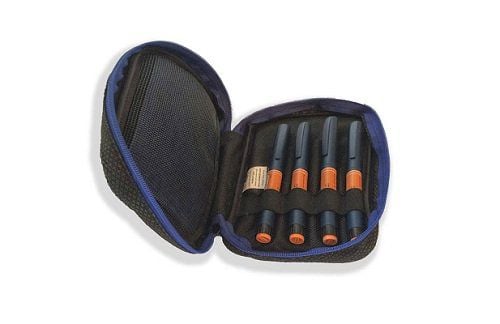
Bảo quản insulin ở những nơi không có ánh sáng và nhiệt
Store insulin in a place away from light and heat. If insulin is not stored in the refrigerator, store it in a sufficiently cold setting (temperature between 13,330C and 26.670C);
Do not freeze insulin. If insulin is frozen do not use it, even if it is thawed;
Unused insulin bottles, containers and insulin pens should be stored in the refrigerator between 2,220C and 7,780C. If stored properly, insulin will work well until the expiration date printed on the bottle.
Keep the container and recently used insulin pen at room temperature (between 13,330C and 26.670C).
6.2 How to take insulin Before taking it, it is necessary to measure and record the blood sugar level several times so that the doctor knows and prescribes the required amount.
Usually people need injections at least twice a day, some people need three or four injections to control blood sugar.
Twice daily with short- or medium-acting insulin; before breakfast and dinner. Short-term insulin helps control sugar in the morning and evening. Average insulin for the afternoon and overnight.
Inject 3 times a day with short-term insulin for morning and before dinner, average insulin for night.
Multiple injections a day with short-term insulin before main meals and medium insulin at bedtime.
Currently, there are insulin pumps (infusion pumps) that are very commonly used. Pumps continuously to deliver a small amount of insulin that is enough to maintain normal blood sugar and can self-regulate to increase insulin according to need, so we can eat and drink a little more freely.
In addition, inhaled insulin (inhalation) is also being used and is quite effective.
Using too much insulin, blood sugar will drop too low, the patient has an insulin reaction whose symptoms are: headache, heart palpitations, tremors, fatigue, disorientation, sweating, nausea, hunger , sometimes unconscious, menopause, coma.
When starting insulin, the doctor will instruct the patient how to change the dose. After a while, getting used to their condition, the patient can increase or decrease the drug on their own. Usually a short-term increase in insulin is caused by eating more than usual and being sedentary; decrease this insulin by eating less and doing more manual labor.
6.3 Insulin Injection Techniques There are different types of insulin with different uses. It should not be automatically changed without consulting your doctor first.
Need to check the label on the insulin vial for the correct type. Discard insulin if cloudy or thick. Normal insulins are milk-like, not lumpy. Before drawing the medication into the syringe, roll the bottle in the palm of your hand to mix, except with insulin short-acting. Do not shake the vial too vigorously as the foam causes incorrect intake.
Before taking the medicine, pull up the syringe so that the air in the syringe is equal to the amount of insulin, insert the needle into the vial, pump the air in, and then smoke.
Purchase syringes according to insulin type and injection volume. A syringe from the same manufacturer should be used so that the amount of insulin drawn each time is uniform. Although not recommended, when reusing old syringe needles, they should be cleaned with alcohol alcohol or boiled in boiling water for several minutes. Also, don't use it over and over again.
The injection sites are usually on the abdomen (fastest effect), buttocks, front of thighs (slowest effect), back of hands (medium potency). Change the injection site to avoid injury and thickening of the fat cells in that area, hindering drug absorption.
After injecting, gently dab on the skin where the injection is to be administered so that the medicine can be dispersed quickly. Avoid stinging where the skin is contaminated or allergic, red rash.
Because it is a drug, insulin can interact with some other drugs, so it is important to let your doctor know which medicine you are taking and for what purpose.
Please dial HOTLINE for more information or register for an appointment HERE. Download MyVinmec app to make appointments faster and to manage your bookings easily.





